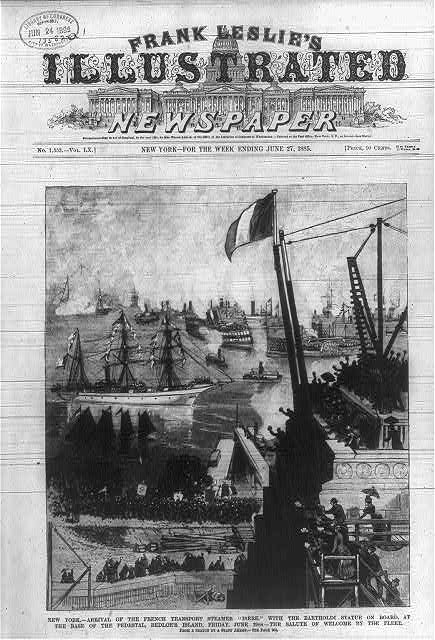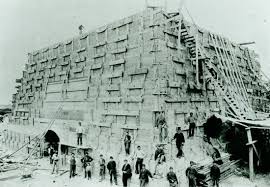A Statue & Two Nations
On June 17, 1885, Lady Liberty arrived at her home in New York Harbor.
In 1865, two Frenchmen, sculptor Fréderic-Auguste Bartholdi and political thinker Édouard Laboulaye, were dining at Laboulaye’s home near Versailles. A staunch abolitionist and admirer of Abraham Lincoln, Laboulaye organized the gathering shortly after the U.S. president’s assassination.
Bartholdi later claimed that it was that night, after Laboulaye suggested the idea of a commemoration for the 100-year anniversary of the United States’ independence, when the inspiration for the Statue of Liberty struck.
If a monument was ever erected in America in memory of its independence, it would seem natural to me that it be erected through a communal effort by the two nations. (France and the United States) Édouard de Laboulaye
Flash forward two decades, after years of fundraising and thousands of manhours designing and constructing the statue, a disassembled Lady Liberty finally arrived at Bedloe’s Island in New York Harbor on June 17, 1885.
The monument’s journey overseas was made possible only by many works of collaboration between the peoples of France and the United States. Bartholdi and engineer Alexandre Gustave Eiffel worked together to create the structure and design of Lady Liberty, while New York architect Richard Morris Hunt constructed the pedestal base. The Franco-American Union, founded by Laboulaye, set off to raise funds for the monument, with the U.S. fundraising for the pedestal’s construction while the French supported the creation and migration of the statue herself.
Broken into 350 pieces and packed into more than 200 crates, Lady Liberty traveled aboard the Isere, a French navy ship. Scientific American published a piece titled, ‘Arrival of the Statue of Liberty’ documenting the celebratory day the Isere ported in the United States of America. According to the article, the official transfer document of the statue was adorned with pictures of the sculpture and pedestal, as well as the heads of Washington and Lafayette, pivotal figures of the American Revolution.

